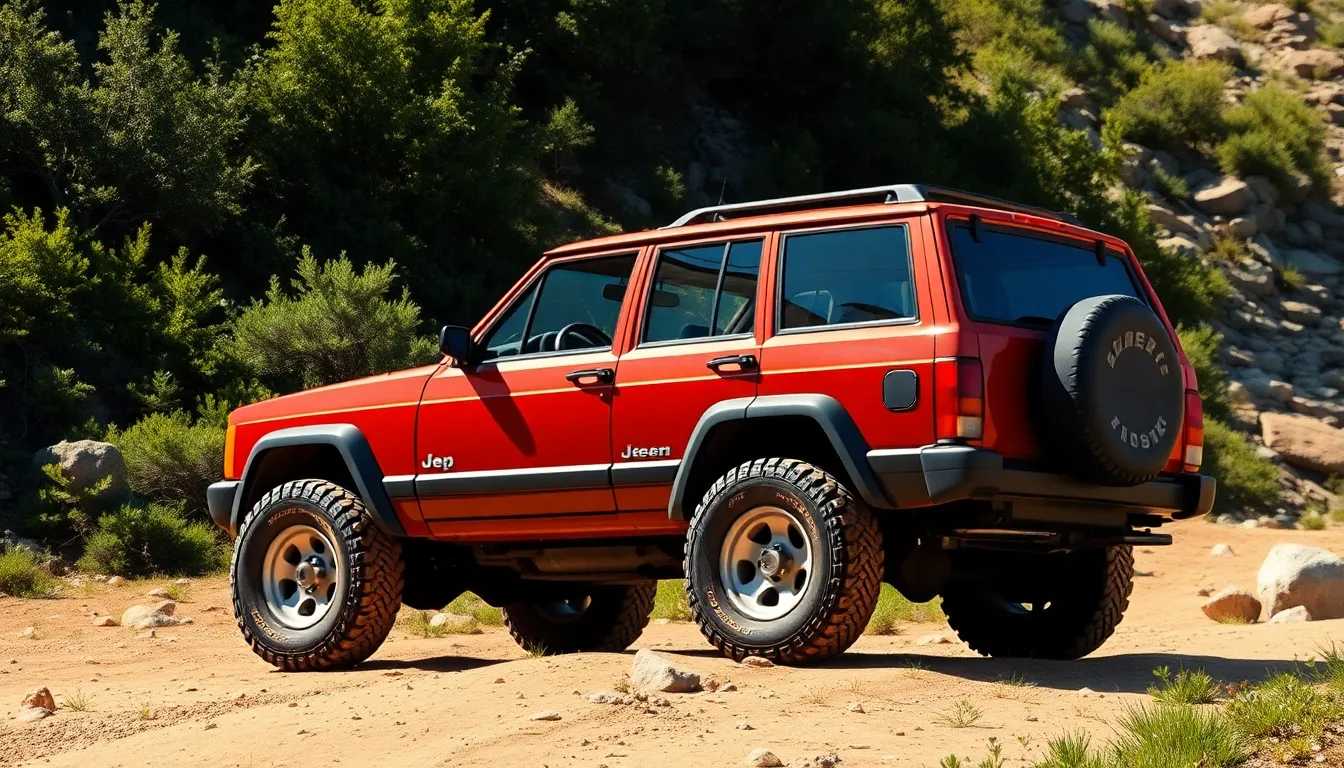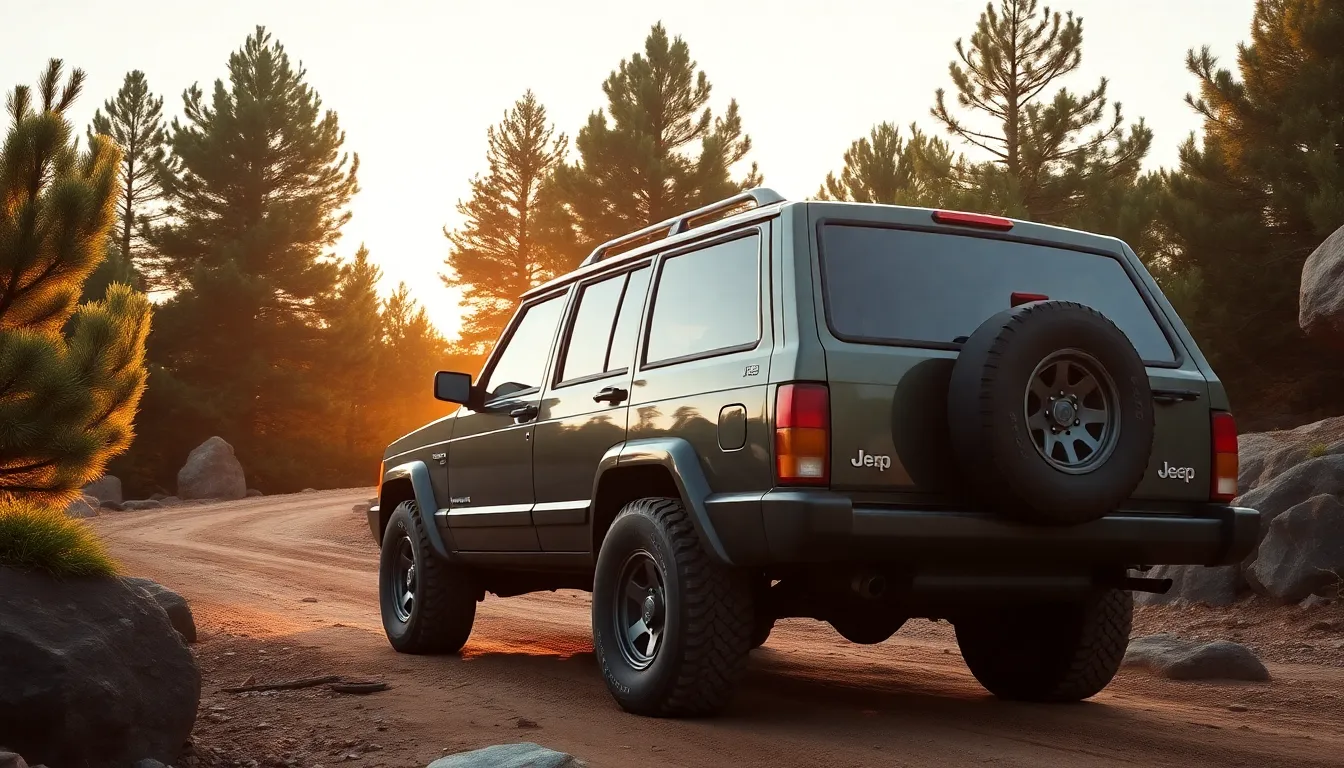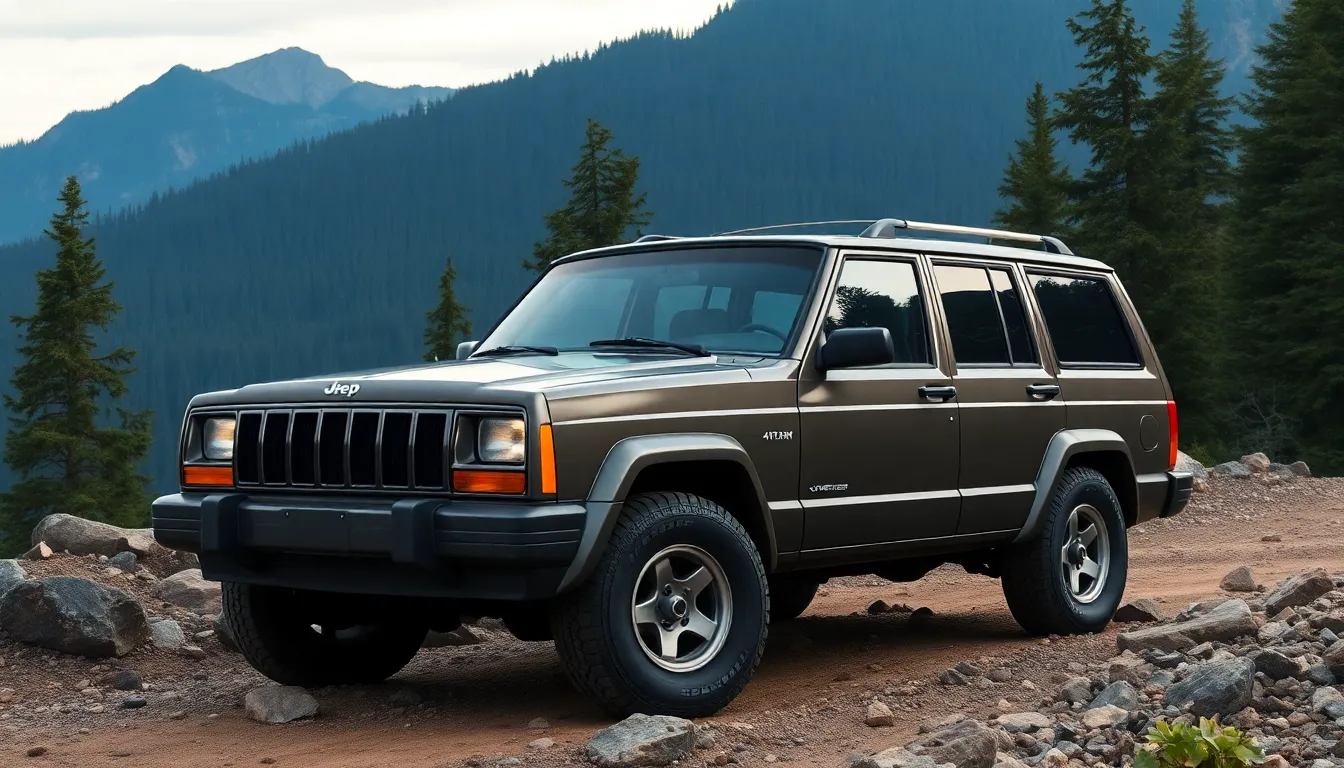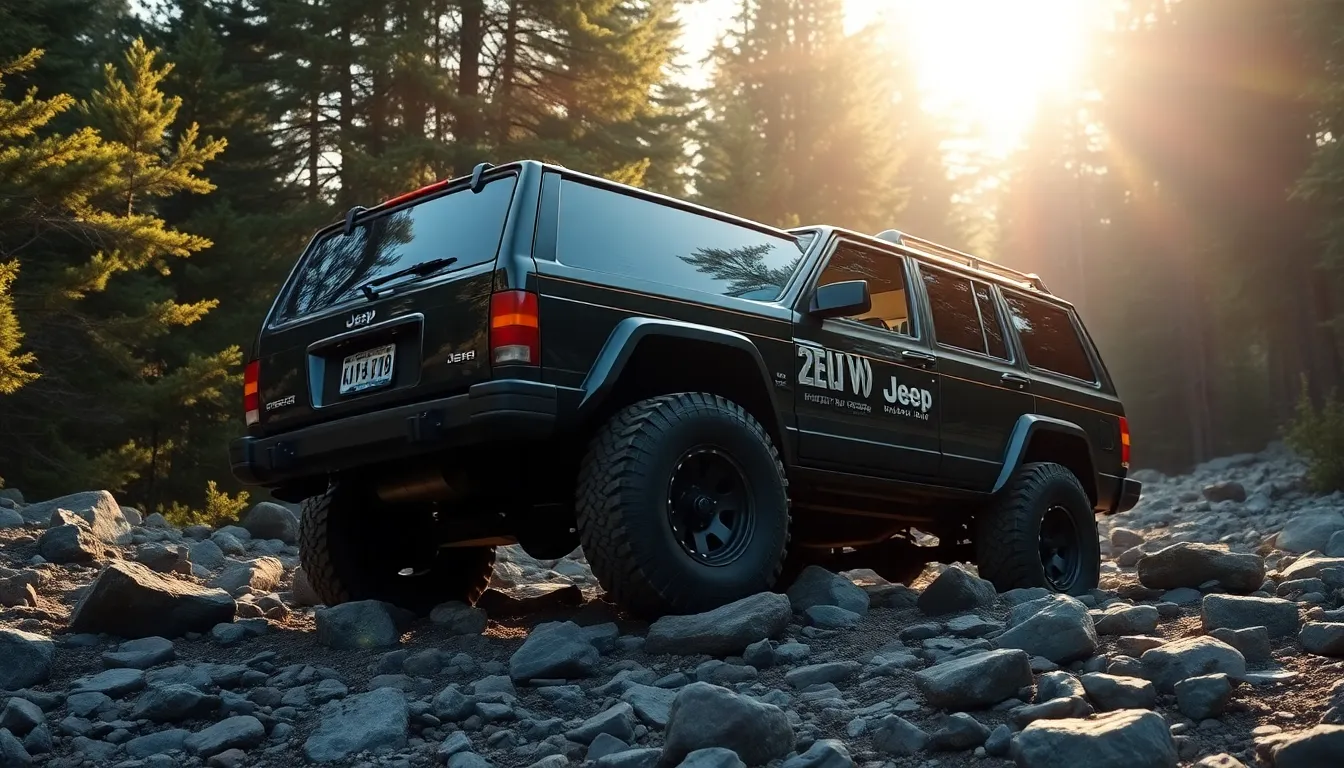Looking for the best year for Jeep Cherokee XJ but overwhelmed by all the options? This iconic 4×4 had an impressive 17-year production run, making it challenging to identify which model year truly stands out as the ultimate choice.
The Jeep Cherokee XJ revolutionized the SUV market when it debuted in 1984, but not all model years were created equal. From important mechanical upgrades in the mid-90s to reliability issues in certain production years, your perfect XJ depends on what you value most—whether that’s durability, off-road capability, or modern amenities. We’ve analyzed the entire XJ lineup to help you find the sweet spot between classic design and refined engineering.
The Legendary Jeep Cherokee XJ: A Brief History
The Jeep Cherokee XJ revolutionized the SUV market when it debuted in 1984, creating an entirely new vehicle category. American Motors Corporation (AMC) designed this compact SUV with unibody construction instead of the traditional body-on-frame approach used by competitors. This innovative design choice gave the XJ exceptional rigidity while keeping weight manageable, leading to better fuel economy and handling than contemporary SUVs.
Production of the Cherokee XJ continued for an impressive 17 years, spanning from 1984 until 2001. During this extended production run, the XJ underwent many changes and improvements while maintaining its distinctive boxy profile and rugged capability. The vehicle’s remarkable longevity in the market speaks to its popularity and functional design that resonated with diverse buyers.
Chrysler’s acquisition of AMC in 1987 marked a important turning point in the XJ’s development. Under Chrysler’s ownership, the Cherokee received various mechanical upgrades and styling refreshes that enhanced its appeal and performance. The most substantial visual update came with the 1997 facelift, which modernized the XJ’s appearance while preserving its iconic silhouette that enthusiasts had come to love.
Throughout its production, the XJ offered several engine options, but the 4.0L inline-six became the most celebrated powerplant. This engine earned a reputation for exceptional reliability and torque delivery, with many examples surpassing 300,000 miles with proper maintenance. The combination of this robust engine with the XJ’s capable 4×4 system created an SUV that excelled both on highways and challenging off-road trails.
The Cherokee XJ’s legacy continues today through a dedicated following of enthusiasts who appreciate its perfect balance of utility, simplicity, and capability. Its influence extends beyond its production years, with many considering it the blueprint for modern SUVs that blend on-road comfort with genuine off-road prowess. The XJ’s timeless design and engineering excellence explain why well-maintained examples command premium prices in the used vehicle market decades after production ended.
What Makes a Great Cherokee XJ Year

The Jeep Cherokee XJ’s reputation varies significantly across its production years, with exact model years standing out for their superior reliability and performance. Understanding the key factors that determine a great XJ year helps narrow down your search to the most dependable options.
Engine Reliability
Engine reliability forms the foundation of any great Cherokee XJ year. The 4.0-liter inline-six engine found in models from 1988-1999 earned legendary status for its exceptional durability and longevity. These engines routinely surpass 200,000 miles with proper maintenance, making them the gold standard for XJ power plants. Models from 1987 and earlier came equipped with the less powerful GM V6 engine, which didn’t match the performance or reliability of the later inline-six. It’s worth noting that the 2000-2001 model years introduced a problematic head casting change in the 4.0L engine that became prone to cracking, significantly reducing reliability in these final production years.
Transmission Quality
Transmission performance varies substantially across different XJ years, directly impacting overall vehicle dependability. Earlier models (1988-1999) featured the robust Aisin-Warner AX15 manual transmission, praised for its smooth operation and durability under stress. The automatic transmissions during this period also demonstrated commendable reliability with proper maintenance. A notable downgrade occurred in 2000 when Jeep replaced the AX15 with the New Venture NV3550 manual transmission, which many owners report as less durable and more prone to issues. The 1993-1999 years represent the sweet spot for transmission quality, offering the most trouble-free options for both manual and automatic preferences.
Rust and Body Issues
Body integrity and rust resistance play crucial roles in determining which XJ years stand the test of time. Early XJ models (1984-1986) exhibit important vulnerability to rust and structural weaknesses, especially in regions with harsh winters or coastal environments. Models from 1988 onward implemented improved corrosion protection and sturdier body construction, particularly benefiting the 1988-1989 models which gained recognition for their exceptional off-road durability. The 1996-1999 models strike an excellent balance between body strength and rust resistance, though all XJs require vigilant maintenance to combat oxidation issues. Regular undercarriage cleaning and prompt repair of paint chips help preserve the body integrity of these aging vehicles regardless of model year.
The Golden Era: 1997-2001 Cherokee XJ

The 1997-2001 model years represent the pinnacle of Jeep Cherokee XJ development, combining refined engineering with proven reliability. These later models benefited from Chrysler’s continuous improvements while maintaining the rugged character that made the XJ legendary.
1997-1999: The Sweet Spot
The 1997 Cherokee XJ marked a important refresh with updated exterior styling and practical improvements like a steel liftgate replacing the previous fiberglass version. Restyled taillights and additional plastic door molding enhanced both aerodynamics and durability, giving these models a more modern appearance without sacrificing the classic XJ profile. Inside, drivers enjoyed a completely redesigned instrument panel with improved ergonomics and updated safety features, including interchangeable airbags compatible with both right and left-hand drive markets.
These sweet spot years earned their reputation through exceptional reliability and off-road capability, with far fewer reported issues compared to other production years. Many XJ enthusiasts specifically seek out 1997-1999 models for their perfect balance of modern amenities and mechanical simplicity. The 1996 and 1999 models receive particular praise in owner forums for delivering dependable performance year after year.
XJs from this era continue performing admirably with basic maintenance, often reaching well beyond 200,000 miles without major mechanical failures. A robust aftermarket for parts and upgrades ensures these vehicles remain serviceable and customizable for years to come, making them particularly attractive to off-road enthusiasts and daily drivers alike.
2000-2001: The Final Refinements
DaimlerChrysler’s ownership brought further refinements to the 2000-2001 models, though these years also introduced some compromises. Option packages became more streamlined, with fewer individual choices available on certain trim levels. Mechanical changes included a switch to a low-pinion Dana 30 front axle and several modifications to the venerable 4.0-liter inline-six engine.
The 2000 Limited trim received luxury upgrades including distinctive 16-inch alloy wheels and chrome grille accents, appealing to buyers seeking more comfort. Engineering changes included a transition to a distributorless ignition system that improved reliability, though the new head casting proved problematic and was prone to cracking under certain conditions.
The 2001 model year marked the XJ’s final production run, maintaining most of the 2000 updates while consolidating trim options. Jeep discontinued the 2.5-liter inline-four engine option entirely, focusing exclusively on the 4.0-liter powerplant. Though these final XJs faced some exact issues like the engine head cracks, they represent the most refined evolution of the platform before production ended.
While not as trouble-free as the 1997-1999 models, these final-year Cherokees offer the most advanced factory features and represent the culmination of nearly two decades of XJ development and refinement.
Early Models Worth Considering (1991-1996)

The early to mid-90s Cherokee XJ models offer excellent value with improved reliability over the earliest iterations. These years represent a period of refinement where Jeep addressed many initial design concerns while maintaining the rugged character that made the XJ legendary.
The 1991-1993 Era
Cherokee XJs from 1991-1993 demonstrate solid overall performance and continue the durable design established in previous years. These models feature the reliable 4.0L inline-six engine that’s become synonymous with XJ dependability. Mechanical improvements during this period resulted in fewer issues compared to the earliest XJs while retaining the exceptional off-road capability that enthusiasts love. Many owners report these models regularly reaching well beyond 200,000 miles with proper maintenance. The 1993 model year particularly stands out as it benefited from several years of continuous improvement to the platform.
1994-1996: Transition Years
The 1994-1996 Cherokee XJs mark an important evolutionary period in the vehicle’s development. Jeep implemented important refinements during these transition years that enhanced both reliability and comfort. The 1996 model year emerges as a standout choice among XJ enthusiasts for its exceptional durability and dependability. These models feature improved rust protection compared to earlier versions and benefit from chassis refinements that enhance both on-road comfort and off-road capability. Many current owners praise the 1996 Cherokee for striking an ideal balance between the simpler, more mechanical early models and the more refined later versions. The robust construction and proven drivetrain components of these transition years make them particularly appealing for buyers seeking reliability without the premium price of the later “golden era” models.
Years to Approach with Caution

Early XJ models manufactured before 1988 present several reliability concerns that merit careful consideration. These initial versions came with various mechanical issues that Jeep addressed in later production years. Pre-1988 Cherokees often suffer from more frequent breakdowns and parts failures compared to their successors.
The 2000-2001 models mark another period requiring extra scrutiny when shopping for an XJ. Under DaimlerChrysler ownership, these final production years introduced important changes including upgraded alloy wheels on Limited trims and a switch to a distributorless ignition system for the 4.0-liter inline-six engine. Unfortunately, these models developed a reputation for cylinder head cracking issues due to a problematic redesign of the casting.
Post-2000 XJs experienced noticeable declines in build quality across several systems. Owners frequently report problems with:
- Transmission performance and longevity
- Powertrain reliability issues not present in earlier models
- Infotainment system failures
- Deteriorating interior materials
While these later models offer modern amenities and represent the final evolution of the XJ platform, they lack the bulletproof reliability that made the 1988-1999 Cherokees legendary among off-road enthusiasts. The manufacturing changes implemented during this period created unforeseen complications that weren’t present in the mid-to-late 90s models.
Buying a Used Cherokee XJ: What to Look For

Finding a well-maintained Cherokee XJ requires careful inspection of key components that determine its longevity and performance. Focus on these critical areas to ensure you’re getting a reliable vehicle that meets your needs.
Engine Condition
The 4.0L inline-six engine stands as the most desirable power plant in the Cherokee XJ lineup, particularly the “High Output” versions produced from 1991 onward. These engines regularly surpass 200,000 miles with proper maintenance and offer excellent parts availability. Listen for unusual noises during startup and operation, check for oil leaks around the valve cover, and examine the coolant for signs of contamination. A compression test provides valuable insight into the engine’s internal condition and helps verify its remaining service life.
Drivetrain Components
Transmission options affect both reliability and driving experience in your XJ. The Aisin-Warner AW4 automatic transmission earned praise for its durability, while the 5-speed manual offers greater control for off-road enthusiasts. Test all gears during your drive and verify smooth shifting without hesitation or slipping.
The transfer case deserves equal attention—both the Command-Trac and Selec-Trac systems have proven reliable when properly maintained. Engage 4WD during your inspection to confirm proper operation of this critical off-road component.
Axle Configuration
Axle selection significantly impacts the XJ’s capability and durability. Early to mid-90s models occasionally feature the coveted Dana 44 rear axle, prized for its strength in off-road applications. Later production years primarily used the Dana 35, which serves adequately for normal driving but may require upgrades for serious trail use. Inspect for leaks around the differential covers and listen for unusual noises that might indicate bearing wear or gear damage.
Rust Inspection
Rust represents the most common threat to XJ longevity. Carefully examine the rocker panels, floor pans, and rear quarter panels for corrosion. Check where the unibody frame meets the floor and inspect the rear cargo area for signs of water intrusion. Substantial rust compromises structural integrity and often indicates neglected maintenance in other areas as well.
Maintenance History
A comprehensive service history provides invaluable insight into how the previous owner treated the vehicle. Regular oil changes, cooling system maintenance, and transmission service indicate a well-cared-for XJ. Ask for documentation of any major repairs or upgrades, particularly about the cooling system, which can be a weak point in these vehicles. Proper maintenance often proves more important than the exact year when evaluating an individual Cherokee’s condition.
Conclusion
The Jeep Cherokee XJ stands as a landmark SUV with each model year offering unique benefits. While the 1997-1999 models represent the “sweet spot” with their refined engineering and proven reliability the 1991-1996 models provide excellent value without the premium price tag.
When shopping for your XJ focus on maintenance history rather than just the model year. A well-maintained 1994 can outperform a neglected 1999. Prioritize examples with the legendary 4.0L inline-six engine and be vigilant about rust inspection.
Remember that the best Cherokee XJ is eventually the one that meets your exact needs and budget. Whether you’re tackling trails or seeking a reliable daily driver this iconic vehicle continues to deliver decades after its introduction with a passionate community to support your ownership journey.
Frequently Asked Questions
What years are considered the “Golden Era” for the Jeep Cherokee XJ?
The “Golden Era” of the Jeep Cherokee XJ spans from 1997 to 2001, representing the pinnacle of its development. These models combine refined engineering with proven reliability. The 1997-1999 models are particularly sought after as the “sweet spot,” featuring significant updates like a steel liftgate, restyled taillights, and improved interior ergonomics while maintaining exceptional reliability.
Which Jeep Cherokee XJ engine is most reliable?
The 4.0-liter inline-six engine from 1988-1999 is renowned for its durability. With proper maintenance, these engines often exceed 200,000 miles. The “High Output” versions from 1991 onward are particularly reliable. Earlier models with the GM V6 engine are less dependable and should be approached with caution.
Are there any Jeep Cherokee XJ years to avoid?
Yes, models manufactured before 1988 present several reliability concerns, including frequent breakdowns and parts failures. The 2000-2001 models also require extra scrutiny due to issues like cylinder head cracking, transmission problems, and interior material deterioration. While these later models offer modern amenities, they lack the legendary reliability of the 1988-1999 Cherokees.
What is the best value Jeep Cherokee XJ model year?
The 1991-1996 Cherokee XJ models offer excellent value with improved reliability over the earliest iterations. The 1996 model year emerges as a standout choice for its exceptional durability and dependability. These transition years are appealing for buyers seeking reliability without the premium price of the later “golden era” models.
What should I check when buying a used Cherokee XJ?
Inspect the engine for unusual noises, oil leaks, and coolant contamination. Check the transmission and transfer case performance. Examine the axle configuration for your needs. Thoroughly inspect for rust, especially in the floorboards, rocker panels, and rear quarter panels. A comprehensive maintenance history is crucial—regular upkeep often outweighs the specific model year when assessing a vehicle’s condition.
Why is the Jeep Cherokee XJ considered revolutionary?
The Jeep Cherokee XJ revolutionized the SUV market with its 1984 debut as a compact SUV featuring unibody construction. This design offered better fuel economy and handling compared to traditional body-on-frame designs. Its combination of on-road comfort with off-road capability influenced countless modern SUVs. The XJ’s lasting legacy and dedicated following demonstrate its significance in automotive history.
What major changes occurred in the 1997 Cherokee XJ?
The 1997 Cherokee XJ received a significant facelift including a steel liftgate (replacing the fiberglass version), restyled taillights, and improved interior ergonomics. These updates modernized the vehicle while maintaining its exceptional reliability and off-road capability. This model year marks the beginning of what many enthusiasts consider the “sweet spot” in XJ production.
How long did Jeep produce the Cherokee XJ?
The Jeep Cherokee XJ had a remarkable 17-year production run starting in 1984 and ending in 2001. This lengthy production period saw numerous changes and improvements, particularly after Chrysler’s acquisition of AMC in 1987, which brought substantial mechanical upgrades and eventually a significant facelift in 1997.
